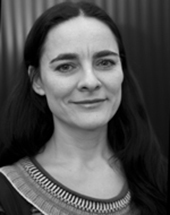| Patricia Pisters |
 The Neuro-Image: Brain Cinema and Digital Logic This lecture approaches neuroaesthetics in a threefold way, arguing for a (sometimes asymmetric) co-development of cinema aesthetics, digital technology and neuroscience. Cinema in the digital age has become a brain cinema. In today's cinema we move through character's brain worlds rather than following their actions or looking through their eyes. Examples of these kinds of neuro-images are Eternal Sunshine of the Spotless Mind (Michel Gondry, 2004), Inception (Christopher Nolan, 2010), and Source Code (Duncan Jones, 2010). Typically we see people hooked up to a kind of brain scanning machine, but also when this is not so literally emphasized contemporary cinema has become a brain cinema which differs in major ways from previous dominant modes of filming. In this presentation I will argue in which ways cinema in the digital age call into play new brain circuits, new synaptic connections that parallel in significant ways to the material discoveries of the biology of the brain. Biography Patricia Pisters is Professor of Film Studies and Chair of the department of Media Studies of the University of Amsterdam. She is founding editor of Necsus: European journal of Media Studies (www.necsus-ejms.eu). Her publications include The Matrix of Visual Culture: Working with Deleuze in Film Theory (Stanford University Press, 2003) and Mind the Screen (ed. with Jaap Kooijman and Wanda Strauven, Amsterdam University Press, 2008). Her latest book is The Neuro-Image: A Deleuzian Film-Philosophy of Digital Screen Culture (Stanford University Press, 2012). |

